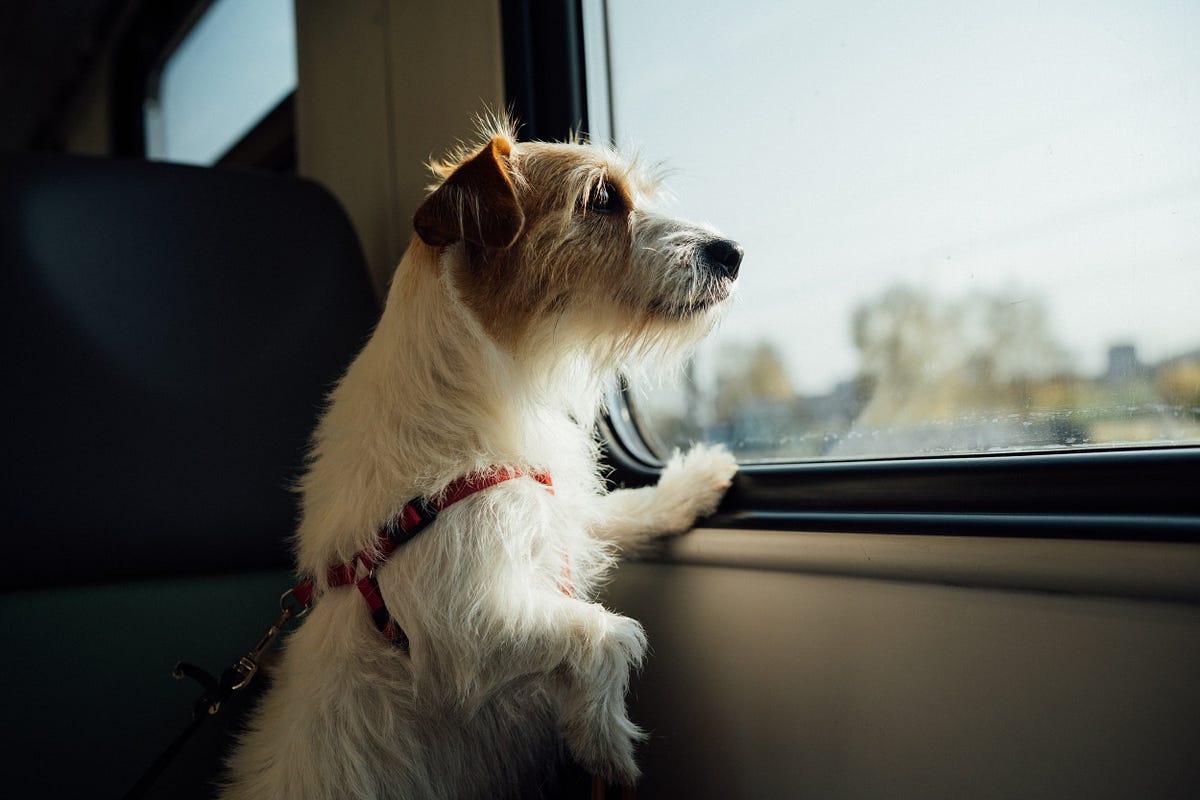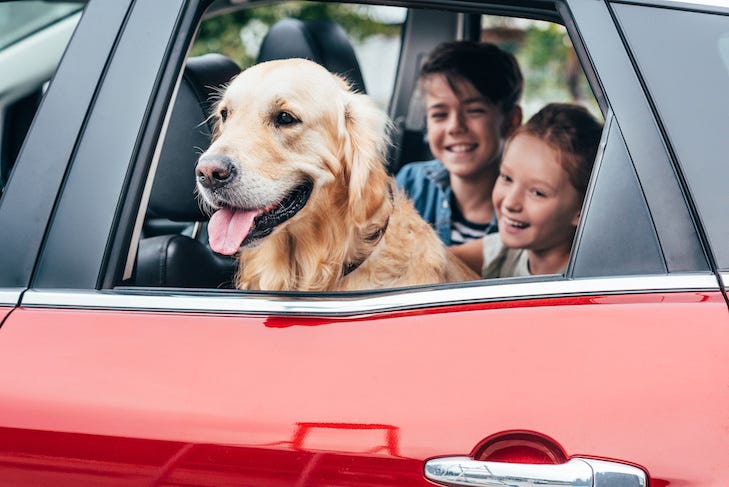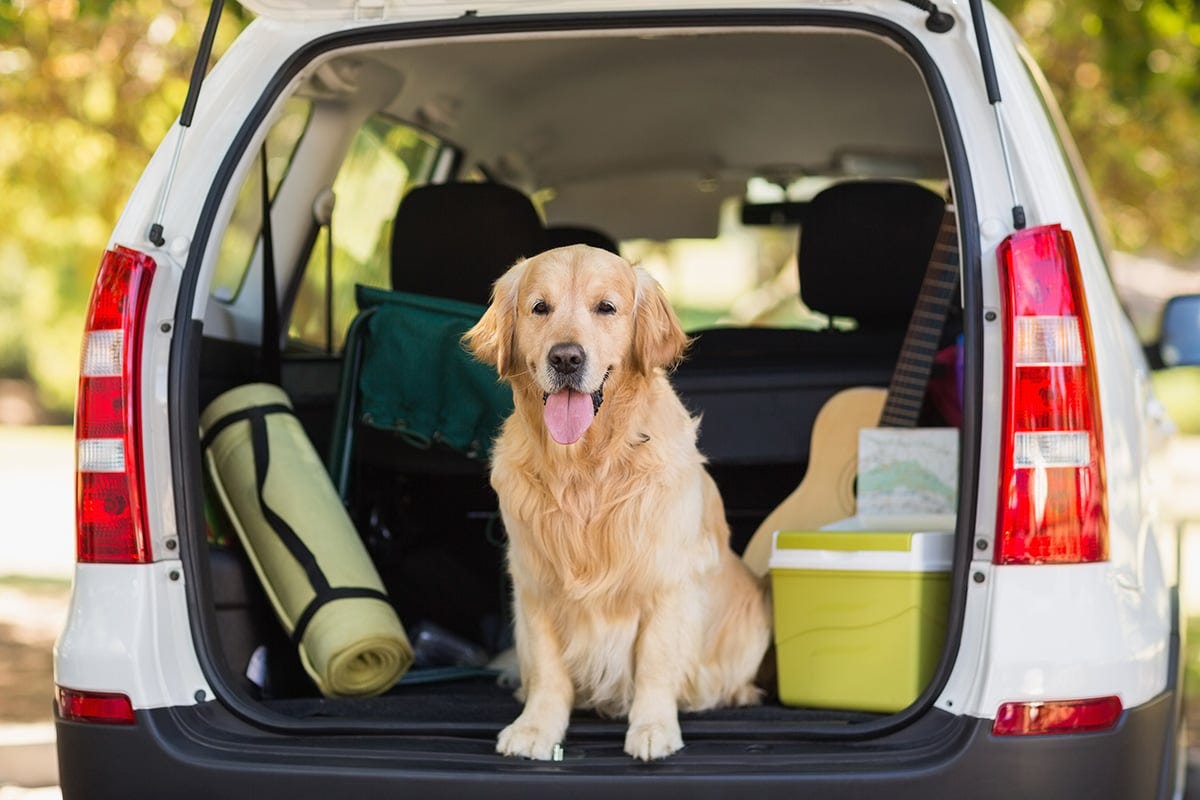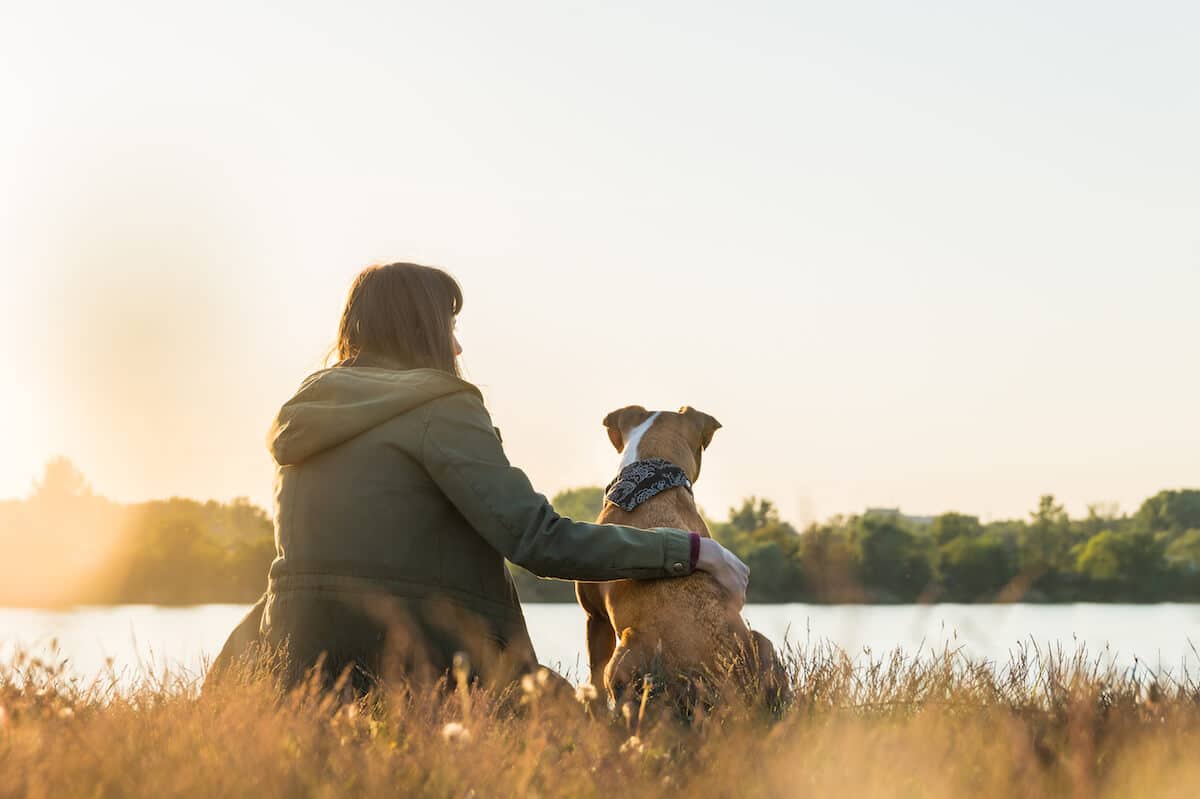How To Travel with A Dog: Successfully Planning Your Trip
Traveling with your dog isn’t just about bringing them along — it’s about creating unforgettable memories together. Whether it’s a weekend road trip, a cross-country flight, or an international escapade, your furry companion can be the perfect adventure buddy. But let’s be real — figuring out how to travel with a dog requires some extra planning to keep them safe, happy, and comfortable. From packing the right gear to navigating airport security, we’ve got you covered with expert tips and real-life hacks.
Buckle up (and leash up!), because we’re diving into everything you need to know for smooth, stress-free travels with your four-legged co-pilot.

PRE-TRIP PREP: GETTING YOUR DOG READY FOR THE JOURNEY
Before you hit the road or take to the skies, a little preparation goes a long way in ensuring your dog has a great travel experience.
Start by scheduling a vet visit to confirm your pup is healthy enough for travel and up-to-date on vaccinations — some destinations even require specific shots or health certificates.
Gradually acclimate your dog to their travel carrier or car harness if they’re not used to it, turning it into a cozy den with familiar blankets and toys. Research pet policies for airlines, hotels, and attractions so there are no last-minute surprises. And don’t forget a trial run — a short test trip can reveal quirks (like carsickness or anxiety) that you’ll want to address before the big adventure.
Vet Check & Paperwork: The Essential First Step for Traveling With a Dog
A pre-trip vet visit is non-negotiable, especially if you’re crossing state lines or flying internationally. Ask for a health certificate (usually required within 10 days of travel) and ensure your dog’s rabies tag and microchip info are current.
If your pup gets anxious or motion sick, discuss remedies like anti-nausea meds or calming supplements — some owners swear by ginger chews or CBD treats (with vet approval, of course!). For international trips, research quarantine rules;
Hawaii and Australia, for example, have strict protocols to prevent rabies. Keep digital and physical copies of all documents in a waterproof folder — trust us, scrambling for paperwork mid-flight is no one’s idea of fun.
Packing List for Dogs: Don’t Forget These Travel Must-Haves
Imagine arriving at your Airbnb only to realize you left the dog food at home — avoid disasters with a foolproof packing list. Essentials include: a collapsible bowl, enough food for the trip plus extra (brands can vary by location), waste bags, a first-aid kit, and any medications.
Bring familiar items like their bed or a worn T-shirt of yours to ease anxiety in new places. For road trips, a seatbelt harness or crash-tested crate keeps your dog safe during sudden stops.
Pro tip: Pack a “doggy go-bag” with portable water, treats, and a toy for pit stops — it’ll save you from digging through luggage every time your pup needs a break.
Training & Comfort Prep: Helping Your Dog Love Travel
Not all dogs are natural road warriors, but most can learn to enjoy trips with positive reinforcement. If your pup gets carsick, start with short drives to fun destinations (like the park) to build happy associations.
For flight anxiety, practice crate training at home with treats and calming music. Teach a solid “settle” command so your dog can relax on trains or in hotel rooms — this is golden for high-energy breeds.
One traveler taught her Border Collie to “go to mat” on command, turning chaotic airport layovers into chill sessions. Remember, patience is key; even the most nervous pups can become confident travelers with time.

HOW TO TRAVEL WITH A DOG BY CAR: ROAD TRIP RULES FOR HAPPY PAWS
Road trips offer the ultimate flexibility for traveling with dogs, letting you stop for sniff breaks and scenic walks whenever needed. Before departure, map out pet-friendly rest stops and parks along your route — apps like Bring Fido are lifesavers for finding dog-approved spots.
Secure your pup properly with a harness, crate, or backseat barrier to prevent dangerous distractions while driving. Keep the car cool and well-ventilated, never leaving your dog alone in a parked vehicle (temps soar dangerously fast!). With the right prep, your co-pilot will be nose-out-the-window happy for miles.
Safety First: Securing Your Dog for Stress-Free Driving
An unsecured 60-pound Lab becomes a 2,700-pound projectile in a crash — yikes! Use a crash-tested harness (like SleepyPod or Ruffwear) or a secured crate to keep your dog safe.
Smaller dogs often love booster seats with harness clips for better views (and less carsickness). Practice “car calmness” by rewarding relaxed behavior with treats; one road-tripping couple taught their terrier to nap in his car bed by pairing it with a special “road trip” chew.
Always keep a leash handy for pit stops — excited dogs have been known to bolt in unfamiliar areas. And if your pup drools excessively, try a non-drowsy motion sickness remedy recommended by your vet.
Fun Pit Stops: Making the Journey Part of the Adventure
Why rush when the road is dotted with doggy delights?
Plan breaks every 2–3 hours at spots like:
- Dog-friendly beaches (Lake Michigan’s Warren Dunes allows off-leash play)
- National Park trails (many welcome leashed dogs on select paths)
- Quirky roadside attractions (like the Dog Bark Park Inn in Idaho — a giant beagle-shaped B&B!)
- Pack a frisbee or collapsible water bowl for impromptu play sessions.
One creative traveler staged a “sniffari” at each stop, hiding treats in grass for her Beagle to discover — mental stimulation = less restlessness in the car. Check local leash laws, though; not all areas allow off-leash fun.
Overnight Stays: Finding the Perfect Dog-Friendly Lodging
Not all hotels roll out the red carpet for pups, so book ahead at truly pet-welcoming spots. Chains like Kimpton and Loews offer perks like dog beds, bowls, and even room-service menus (yes, steak for Fido!). For road-weary dogs, request a quiet ground-floor room near an exit for easy potty breaks. Always inspect the space for hazards (loose wires, toxic plants) upon arrival.
One road-tripper brings a white noise machine to mask unfamiliar hotel sounds — genius for light sleepers. And remember: A tired dog is a well-behaved guest, so squeeze in extra playtime before settling in.

HOW TO TRAVEL WITH A DOG BY PLANE: NAVIGATING THE SKIES TOGETHER
Flying with your dog can feel daunting, but thousands of pups jet-set safely each year with the right know-how. Smaller dogs (under ~20 lbs) can often ride in-cabin under the seat, while larger breeds may need to fly as checked baggage or cargo — research airline-specific size/breed restrictions early.
Book direct flights when possible to minimize stress, and avoid peak travel days when airports are chaotic. Acclimate your pup to their carrier weeks before the flight with positive reinforcement (treats, cozy blankets). With smart prep, you’ll both be soaring smoothly.
Choosing the Right Airline: Policies That Put Pets First
Not all airlines are created equal for furry travelers. Alaska Airlines leads with climate-controlled cargo holds and a “Fur-st Class Care” program, while JetBlue’s JetPaws offers extra loyalty points for pet flights. Avoid airlines with poor pet safety records (do your Googling!). For in-cabin pups, measure your carrier carefully — each airline has strict under-seat size limits.
One traveler swears by the “squish test”: If you can gently compress the carrier height slightly, it’ll likely fit (but check with your airline first!). Always call to confirm pet reservations; don’t rely on online bookings alone.
Airport Survival Guide: Keeping Calm From Check-In to Landing
Arrive extra early to navigate pet check-in procedures (usually at the counter, not kiosks). Exercise your dog thoroughly before security — a tired pup is a calm pup.
At TSA, you’ll carry your dog through the metal detector while their crate gets X-rayed (tip: Use a slip leash for easy on/off). Post-security, seek out pet relief areas; major airports like JFK even have faux fire hydrants!
In-flight, keep interactions low-key to avoid disturbing neighbors — one frequent flyer stuffs a Kong with frozen peanut butter for quiet licking. And remember: Hydration is key, but go easy on water right before boarding.
Cargo Travel for Big Dogs: Ensuring Safety and Comfort
If your dog must fly in cargo, choose flights during mild temperatures (early morning or late evening in summer, midday in winter). Use an airline-approved hard-sided crate labeled “LIVE ANIMAL” with absorbent bedding and a secure water dish.
Attach a pouch with your contact info, a photo of your dog, and feeding instructions — one owner included a note saying, “I’m shy but sweet!” to encourage gentle handling.
Track your dog’s flight status; some airlines provide updates. Upon arrival, head straight to the baggage claim’s oversized area — reunions make the best travel memories!

INTERNATIONAL TRAVEL WITH DOGS: CROSSING BORDERS LIKE A PRO
Taking your pup abroad is the ultimate adventure, but it requires next-level preparation to navigate different countries’ pet import laws.
Start researching at least 6 months in advance — some destinations like Japan and Australia require lengthy quarantine periods or complex blood tests.
The EU requires a microchip, rabies vaccine (given at least 21 days before travel), and an EU health certificate from an accredited vet.
Tropical locations often mandate additional treatments for parasites like heartworm or ticks. With careful planning though, you and your globetrotting pup can be sipping café au lait in Paris or hiking New Zealand’s trails together!
Pet Passports & Documentation: The Paperwork Puzzle
A pet passport (available for EU travel) simplifies repeat visits, but first-timers need an animal health certificate from an USDA-accredited vet.
Some countries require rabies titer tests 3–6 months pre-travel — the blood sample must be sent to an approved lab like Kansas State. Keep color copies of all documents in your phone’s cloud storage in case originals get lost.
One traveler laminated their dog’s paperwork into a foldable “passport” with pockets for stamps.
Pro tip: Verify if your destination requires documents to be translated — a family nearly got turned away in Chile because their forms were in English only!
Airline-Approved Crates: Fort Knox for Furry Flyers
International pet crates must meet IATA standards with metal bolts, ventilation on 3 sides, and “Live Animal” labels in multiple languages.
Measure your dog standing up — their ears shouldn’t touch the top. Line the crate with absorbent puppy pads topped with a familiar-smelling T-shirt.
Freeze water in the bowl 2 hours before flight to prevent spills but provide hydration after takeoff.
One clever owner zip-tied a GoPro to the crate to monitor their Great Dane during a transatlantic flight — they spotted handlers giving him belly rubs during a layover!
Quarantine & Entry Procedures: What to Expect Upon Arrival
Some countries like Singapore require pets to complete quarantine before release — book these facilities months in advance as spots fill fast.
Upon landing, head straight to Animal Reception Centers where officials will scan microchips and check paperwork. Budget extra time; processing can take hours in busy airports like London Heathrow.
One golden retriever’s owner paid for an expedited customs agent in Costa Rica — worth every penny when they were on the beach by sunset! Research pet-friendly transportation too; Tokyo’s Narita Airport even has a “Pet Taxi” service with built-in crates.

CAMPING & HIKING WITH DOGS: TRAIL-TESTED TIPS
Nothing beats waking up to your pup’s wagging tail inside a tent as sunlight filters through the trees! Before hitting the trails, confirm dogs are allowed — many national parks restrict them to paved areas only.
Pack a doggy first-aid kit including tweezers (for ticks), vet wrap, and a paw balm like Musher’s Secret. Bring 2x the water you think you’ll need — dehydration hits dogs faster than humans.
At camp, use a glow-in-the-dark collar or clip-on LED so you can spot your dog after dark. With the right prep, you’ll both be howling at the moon in happiness!
Paw Protection: Conquering Rough Terrain Safely
Arizona’s red rocks or Colorado’s alpine trails can tear up tender paws — try breathable dog boots like Ruffwear Grip Trex.
Start breaking them in weeks before your trip with short neighborhood walks. Check paws nightly for cracks or burrs; one hiker carries a portable paw washer (basically a silicone cup with bristles).
For unexpected injuries, learn to wrap paws with gauze and duct tape as a temporary boot. The record for toughest trail dog? A Jack Russell who completed the 2,190-mile Appalachian Trail wearing 12 pairs of boots!
Wildlife Encounters: Keeping Your Dog (And Nature) Safe
A curious pup can trigger defensive reactions from moose, snakes, or bears — always keep dogs leashed in wilderness areas.
Train a solid “leave it” command; one owner practiced with deer antlers found on hikes. In rattlesnake country, consider aversion training classes where dogs learn to avoid the sound.
Store dog food in bear-proof containers — a Labrador in Yosemite once dragged a whole food bag into camp, attracting a black bear family! At night, keep your dog’s sleeping area inside the tent — coyotes have been known to investigate canine smells.
Water Safety: Swimming & Boating Precautions
Not all dogs are natural swimmers — brachycephalic breeds like Bulldogs may need life jackets even in shallow water.
Rinse your dog after ocean swims to remove salt that can irritate skin. Watch for dangerous currents; a Golden Retriever in Michigan needed rescue after chasing ducks too far into Lake Superior!
On boats, provide shade and a non-slip mat — one sailor taught their terrier to use a litter box filled with artificial turf for “pit stops” during long sails. Always have fresh water available; drinking seawater causes dangerous sodium poisoning.

HANDLING EMERGENCIES: VET CARE ON THE GO
When your dog gulps down a mystery mushroom in the Redwoods or gets stung by a jellyfish in Florida, staying calm is step one.
Research emergency vets along your route and save their numbers in your phone — the 24/7 ASPCA Animal Poison Control hotline (888–426–4435) is also vital.
Always Pack a Pet First-Aid Kit
- Benadryl (check dosage with your vet for allergic reactions)
- A digital thermometer (normal dog temp is 101–102.5°F)
- Hydrogen peroxide (for inducing vomiting — only if advised by a professional)
One road-tripper used a Venmo reward to get a local to drive them to a vet after their dog ate marijuana edibles in Denver — quick thinking saved the day!
Car Sickness & Anxiety: Soothing Stressed Travelers
If your dog drools excessively or vomits in the car, try withholding food 3 hours before travel while providing small sips of water.
Ginger snaps or prescription Cerenia can help — one owner swears by “happy hoodies” (calming ear covers) for noise-sensitive pups.
For extreme cases, counterconditioning works: Start by sitting in a parked car giving treats, then progress to short drives to fun places.
A rescue Greyhound who once panicked in cars now gleefully jumps in after 6 months of “car=pizza” training!
Lost Dog Protocols: Prevention & Recovery Tactics
Ensure your dog’s collar tag has your cell number (not just a home address) and that their microchip registration is current. Take clear photos of your dog from all angles before trips — these help make “lost” posters.
One tech-savvy traveler used an Apple AirTag secured to their dog’s collar with a Fi GPS collar as backup when hiking in the Rockies.
If your dog bolts in an unfamiliar area, try the “recall chaos” method: Run away while excitedly calling them — their chase instinct often kicks in!
Check this article about the New Innovative Technology for all Lost Dogs!

REAL-LIFE TRAVEL TALES: INSPIRING STORIES FROM THE ROAD
Meet Bolt, a three-legged Pit Bull who backpacked through 14 national parks using a custom doggy backpack to carry his own supplies. Then there’s Mochi, a Shiba Inu with her own Instagram passport tracking 23 countries — she’s even been snorkeling in Thailand!
These jetsetting pups prove that with creativity and commitment, dogs can join nearly any adventure.
One couple trained their rescue mutt to “press” hotel elevator buttons with her nose — now she proudly leads the way to their room. What unforgettable story will you and your dog create?
The Canine Road Trip Record Holder: A 48-State Adventure
A Labrador named Charley holds the unofficial record for most U.S. states visited by a dog — 48 in 6 months!
His owners planned routes around pet-friendly attractions: dog-friendly gondolas in Telluride, pup-approved pizza joints in Chicago, even a “Yappy Hour” cruise in Seattle.
Their secret? Always having a “dog first” mindset — if Charley seemed tired, they’d stop even at the Grand Canyon’s edge.
The trip’s highlight? Watching Charley gleefully chase snowflows during a surprise April blizzard in the Rockies!
From Shelter to Sailboat: A Dog’s Second Chance at Adventure
Found as a stray in Texas, Remy the Border Collie now sails the Caribbean with his adoptive family. They trained him to use a fake grass pad on deck and wear doggles (doggie goggles) against salt spray.
During a storm near the Bahamas, Remy surprisingly became the calmest crew member, snuggling terrified sailors! His owner says, “He taught us that rescue dogs aren’t broken — they’re just waiting for the right adventure.”
Final Tip: However you travel — by RV, plane, or foot — remember that dogs live in the moment. While you’re stressing over flight connections, they’re just thrilled to be with you.
One traveler’s epiphany came when her anxious terrier suddenly relaxed during a delayed layover: “I realized — if he’s not worried, why should I be?”
Pack your patience, embrace the detours, and let those wagging tails remind you: The journey together is the real destination.
Now, who’s ready for takeoff? Share your best dog travel hack below!





Comments